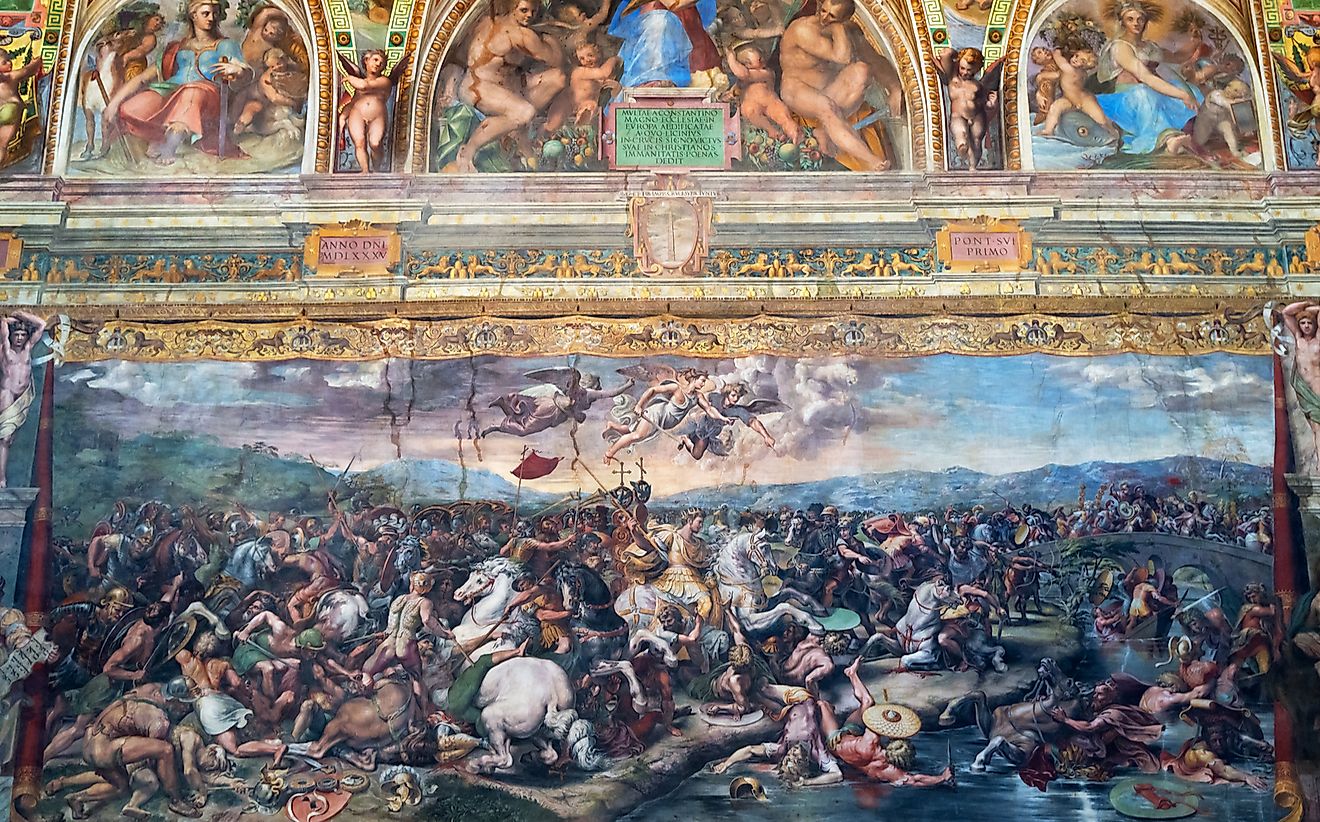Battle of Milvian Bridge: The Battle That Established Christianity

The Battle of the Milvian Bridge is an encounter that happened on October 28th, 312, between Maxentius and Constantine I who were both Roman emperors. To this day, most historians believe that the battle, which was won by Constantine I, started the dominance of Christianity. Prior to Constantine’s reign, the dominant religion was Paganism. History books state that Constantine and his troops went to that war with the notion that the Christian God had sent them a vision of victory. After his victory, Constantine I became the sole ruler and had the Arch of Constantine erected.
5. Historical Significance and Legacy
The main significance of the victory is that it allowed Constantine to make a small sect, Christianity, the dominant religion for the empire and for Europe. The Edict of Milan, which was issued in 313, recognized Christianity as the tolerated and official religion of Rome. However, it is important to note that many historians attribute his victory to superior tactics.
4. Outcome
On October 29th of that year, Constantine victoriously matched his troops into Rome and had a grand ceremony. The body of the deceased Maxentius was recovered, decapitated, paraded in the streets, and the head was sent to Carthage to show his failure. Consequently, Constantine became the sole and undisputed emperor of the western side of Rome. He also ordered that Maxentius be subjected to damnatio memoriae and all his memories and legislations wiped from the records. In addition, the emperor neutralized all the supporters of Maxentius.
3. Description of the Engagement
Everyone believed that Maxentius would see out the siege as he had done before. In fact, he had stockpiled vast food resources within the walls of Rome. However, on the night before the battle, Maxentius visited an oracle who made a prophecy about the death of an enemy of Rome on the day of the battle. Assuming the prophecy implied Constantine, he went out to meet the tactically superior Constantine by the bridge. Constantine and his troops inflicted heavy losses on his opponent’s troops. Seeing that the battle was going unfavorably, Maxentius ordered a retreat while on the bridge. However, he fell into the river and drowned while trying to cross by swimming.
2. Makeup of the Forces
The exact makeup of the forces is not known. However, it is known that Maxentius was barricaded behind the walls of Rome in anticipation of an attack. He had successfully employed this tactic in other battles. In addition, he partially destroyed the Milvian Bridge, which is there even today. His opponent, a skilled battle tactician, was camped in Malborghetto close to Prima Porta.
1. Background
Before the fourth century, Rome was under the leadership of Emperor Diocletian who ruled under a system of sharing power known as a Tetrarchy. This system caused plenty of turmoil until he stepped down in 305. When the fourth century started, the Roman Empire was in constant turmoil with civil wars and other faction clashes rampant. That period, in 306, saw Constantine take the title of emperor in York. However, his opposition, Maxentius, also crowned himself emperor in Rome. Eventually, in 312, the two met in battle at the Milvian Bridge along the River Tiber.











